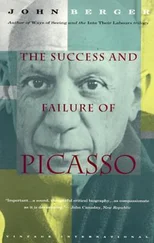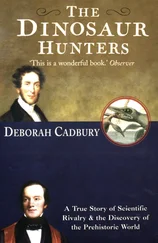A memorable delight for the boys was the arrival of the railway in Birmingham. Britain was in the grip of railway fever, and the Grand Junction Railway steamed into Birmingham from Manchester in 1837. Within a year, a line opened that covered the hundred miles between Birmingham and London. The treacherous two-day journey to the capital by horse and coach was reduced to a mere two hours by steam train. The coming of the railway made a deep impression on the growing family. ‘I got a railway train, first second and third class carriages, with an engine and tender,’ seven-year-old Richard wrote enthusiastically to his brother in 1842. For his father, however, it opened up whole new possibilities for trade.
At the age of eight, Richard was sent away to join his older brother John at boarding school. George studied with a local tutor who had a decidedly individualistic view on the best way to deal with boys. He aimed to instil mental and physical fortitude with a diet of classics and combative sports, including occasional games of ‘Attack’ which he devised himself, and which involved arming the boys with sticks. Somehow George came through the experience with a sound knowledge of French and Virgil, and a keen appreciation of home life. He remembered his childhood as ‘severe but happy’, with an emphasis on discipline and a lifestyle that was ‘bare of all self indulgence and luxury’.
Both George and Richard formed vivid impressions of trips to see their mother’s family at Lancaster. Their maternal grandfather, George Barrow, in addition to running a draper’s shop, had created a prosperous shipping business with trade to the West Indies. His grandchildren were allowed to climb the tower he had built in the grounds of his house, from where they had a stunning view of Morecambe Bay and on occasion his returning ships, sometimes banked up three at a time on the quayside beyond. Sea captains came to visit, and would regale the children with tales of wide seas and foreign lands, the wonders of travel and the horrors of the slave trade.
By 1847 John Cadbury’s Crooked Lane warehouse had been demolished to make way for the new Great Western Railway. Undeterred, John expanded his manufacturing into the Bridge Street premises, and was soon joined by his older brother Benjamin. By 1852 the two brothers were in a position to open an office in London, and they later received a royal accolade as cocoa manufacturers to Queen Victoria. It was around this time that they dreamed up a plan to create a model village for their workers, away from the grime of the city; they even designated one of their brands of cocoa ‘The Model Parish Cocoa’.
In 1850, when he was almost fifteen, Richard joined his father and uncle at Bridge Street, and was doubtless aware of their grand ambitions. With his father often away, he threw himself into the trade with ‘energy and devotion’, observed one relative. Richard kept his father informed of day-to-day events: ‘James is very steady at the engine, keeps it at a regular pace and in beautiful order and is careful not to waste any money over it. The girls do their work cheerfully, but want a good deal of looking after . . . ’
The pressures of learning the trade did not stop Richard indulging his love of sport. He and George were passionately fond of skating, and would often rise at 5 a.m. so as to be on the ice before dawn. ‘Only those who have made the effort know the exhilaration of skating in the early morning and watching the light gradually break and the beauty of the sunrise,’ wrote George. One young friend of his sister Maria remembered that Richard ‘used to fairly dazzle us with his skating’. But events were conspiring against such relaxed pursuits.
Cocoa sales had begun to decline during the economic depression of the ‘Hungry Forties’, when a slump in trade, rising unemployment, bad harvests and a potato blight in England and Scotland in 1845 combined to create widespread hardship. Many small businesses struggled, but for the Cadburys the irrevocable blow came in the early 1850s, when Candia was diagnosed with tuberculosis.
These painful years left their mark on Richard and George. They witnessed the inexorable decline first of their mother then of their father, then the neglect of the factory, as though it too was afflicted with a malady for which there was no known cure. John still occasionally walked through the factory in his starched white collar and neat black ribbon tied in a bow, but the enthusiasm that had prompted him to develop the venture over a period of thirty years was gone. He paid scant attention to the piles of cocoa beans accumulating in the stock room. The hard-won accolade as cocoa manufacturer to Queen Victoria no longer excited him. A year after Candia’s death he dissolved the partnership with his brother Benjamin. Gradually his absences became more prolonged as he searched for a cure for his arthritis, and the family firm began to lose its good name.

These were the pressing concerns in young George Cadbury’s mind when in 1857, like his father and grandfather before him, he too was sent away to learn his trade as an apprentice. His sister Maria had taken his mother’s place in the home looking after the younger children. His older brother Richard was taking on more responsibility for his father’s business. George was keen to master the trade by working in a grocery shop in York run by another Quaker, Joseph Rowntree.
Once past York’s famous city walls, the seventeen-year-old George Cadbury found himself in a maze of winding old streets, with irregular gabled houses, the overhang of their upper storeys making the streets narrow and dark. At the bottom of the Shambles, the road opened onto a busy thoroughfare called Pavement. Almost directly opposite, at number 28, stood Rowntree’s shop, a handsome eighteenth-century terraced house, tall and narrow, its walls made crooked by subsidence. There was little in the colourful thoroughfare outside to hint at the austerity and long hours that awaited George inside the shop.
The strict rules of conduct that Joseph Rowntree expected his numerous apprentices to obey were clearly set out in a Memorandum :
The object of the Pavement establishment is business. The young men who enter it as journey men or apprentices are expected to contribute . . . in making it successful . . . It affords . . . a full opportunity for any painstaking, intelligent young man to obtain a good practical acquaintance with the tea and grocery trades . . . The place is not suitable for the indolent and the wayward . . .
The Memorandum specified every detail of the boys’ lives: no more than twenty minutes for a meal break, only one trip home a year, and the exact hours at which they were to return each night: in June and July they were allowed to walk outside in the evenings until ten o’clock; during all other months the curfew was earlier.
Living at the house were Joseph Rowntree’s sons, including twenty-one-year-old Joseph and nineteen-year-old Henry Isaac. Joseph was tall and dark with intense features, the natural severity of his own character complemented by years of Quakerly upbringing. His father had taken him to Ireland on a Quaker Relief Mission in 1850 during the potato famine, and the experience had left a lasting impression on him: Joseph remembered how slow starvation turned the young and comely into walking corpses. Numberless unknown dead lay in open trenches or where they had fallen by the side of the road. For the serious-minded Joseph it had been a shocking lesson in the effects of poverty. His younger brother Henry provided a contrast to Joseph’s austerity. Somehow the full Puritan weight of Quaker training did not sit quite so readily on him; he had a sense of fun, and could be relied upon to lighten the mood.
Читать дальше













